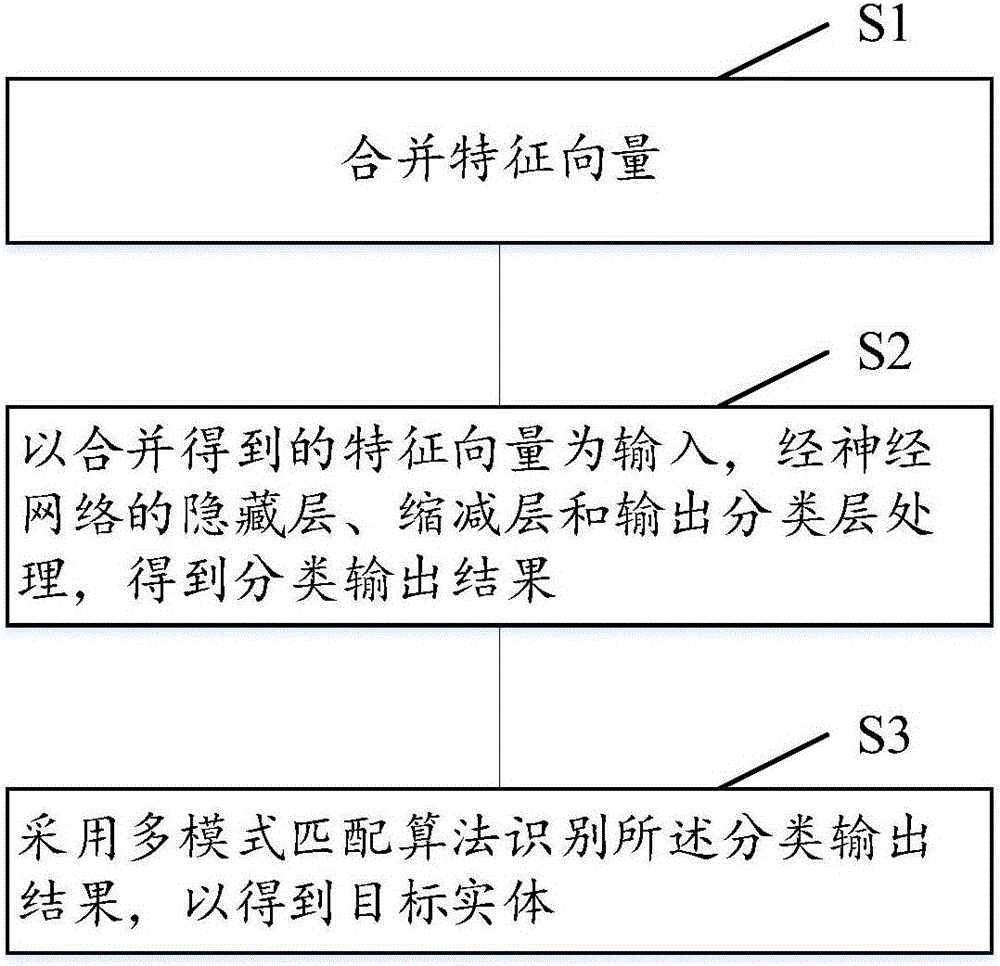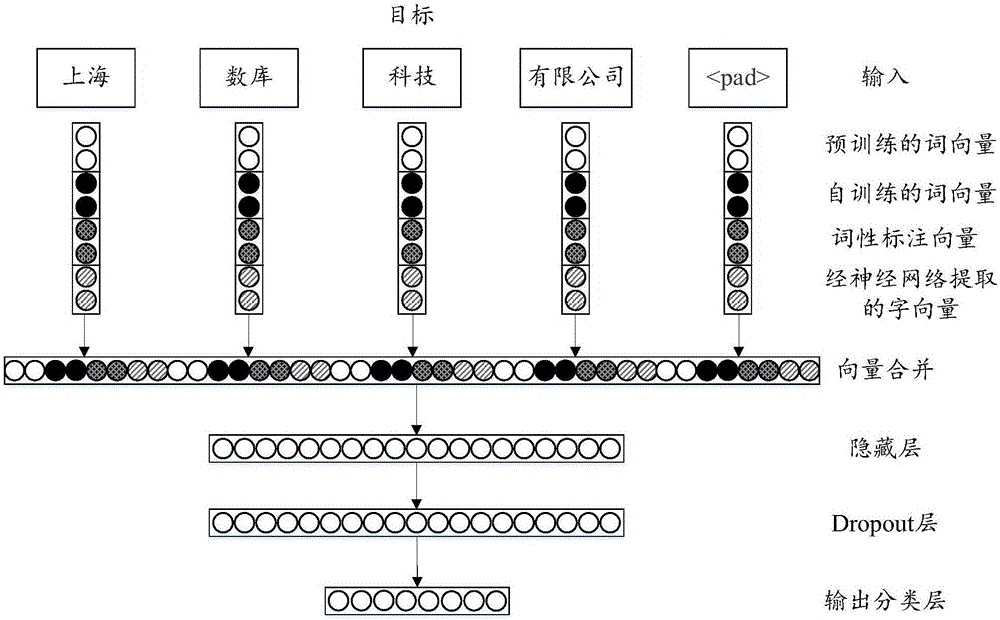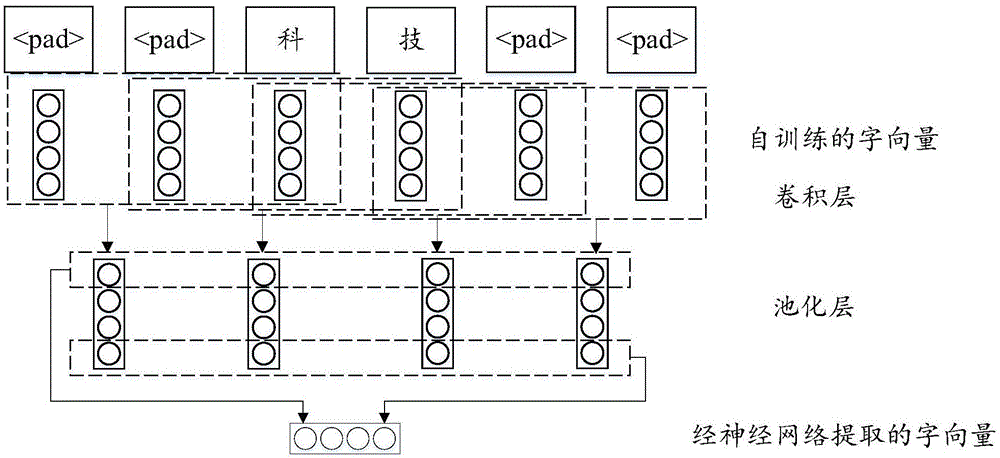Method and system for identifying named entity
A named entity recognition and entity technology, which is applied in special data processing applications, instruments, biological neural network models, etc., can solve problems such as poor prediction ability, inability to follow the network model, single feature, etc., and achieve the effect of improving accuracy
- Summary
- Abstract
- Description
- Claims
- Application Information
AI Technical Summary
Problems solved by technology
Method used
Image
Examples
Embodiment Construction
[0016] For the named entity recognition method of the embodiment of the present invention, please refer to figure 1 ,include:
[0017] Step S1, merging feature vectors;
[0018] Step S2, taking the combined feature vector as input, and processing it through the hidden layer, reduction layer and output classification layer of the neural network to obtain the classification output result;
[0019] Step S3, using a multi-pattern matching algorithm to identify the classification output results to obtain the target entity.
[0020] Combine below figure 2 and image 3 The examples shown are described in detail.
[0021] Step S1, merging feature vectors. Please refer to figure 1 and figure 2 , here a total of 5 words are input, the target entity is the most middle word to be predicted, and blank symbols are used to fill in the insufficient length. In this example, 4 feature vectors are used: the pre-trained word vector wordvec pretrain , self-trained word vector wordvec ra...
PUM
 Login to View More
Login to View More Abstract
Description
Claims
Application Information
 Login to View More
Login to View More - R&D
- Intellectual Property
- Life Sciences
- Materials
- Tech Scout
- Unparalleled Data Quality
- Higher Quality Content
- 60% Fewer Hallucinations
Browse by: Latest US Patents, China's latest patents, Technical Efficacy Thesaurus, Application Domain, Technology Topic, Popular Technical Reports.
© 2025 PatSnap. All rights reserved.Legal|Privacy policy|Modern Slavery Act Transparency Statement|Sitemap|About US| Contact US: help@patsnap.com



